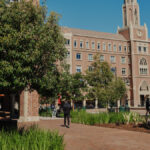
Black History Month (Part 11): Modern life in the ghetto

Institutional or systemic racism is NOT something that only existed in the past. It is found today in virtually every major city in which Blacks are segregated and suffer from a lack of education, jobs, quality housing, and safe streets.
In Black History Month (Part 11), I draw from my book “Who Put Blacks in That PLACE? The Long Sad History of the Democratic Party’s Oppression of Black Americans … to This Day” to reveal just a small sample of the politically driven institutional racism that continues in the Democrat-run major cities.
One of the primary indicators of oppression is civil unrest. The frustration of poverty and racial oppression periodically explodes into riots and other forms of violence. Such unrest is not a reflection of the past, it has been a standard consequence of institutional racism well into the Twenty-First Century. We can look at Cincinnati as an example of modern times racial unrest.
“The Cincinnati Enquirer labeled 2001 the city’s “year of unrest.” In a reflective article, reporter Dan Horn wrote:
Looking back, there were warning signs.
Citizens complained about police officers, protesters hollered and hauled signs at City Hall, community leaders demanded change.
But no one fully understood the danger of Cincinnati’s deep racial divisions until a white police officer shot and killed an unarmed black man in April.
African Americans were outraged. Within days, the anger and frustration that had been building for years spilled into the streets. Rioters broke windows, looted stores, burned trash bins and threw bricks at passing motorists. A city once known as a good place to live and raise kids was embarrassed and stunned.
What is significant in this article is the recognition that the riot was due to Cincinnati’s ‘deep racial divisions’ reflected in those past complaints and protests, the triggering event was a White police officer killing an unarmed Black man—an action that would bring forth protests and riots in American cities into the twenty-first century.”
* * *
“Once again, years of oppression in a Democrat-run city and an incident of dubious or unfortunate law enforcement led to rioting. On April 9, the rioting began. It ran for five days, with each day getting more violent. Fortunately, there were no deaths due to the rioting. There was, however, a significant impact on the city. Damage from the rioting in the Over-the-Rhine community was estimated to exceed $3.5 million and another $2 million in costs to the city.”
Black frustration over institutional racism erupted in riots in many cities in the first quarter of the Twenty-First Century.
“The post-civil rights era of the mid-twentieth century, itself, was a period of intense racial unrest and rioting—mostly in the major cities in which racist Democrat political machines exerted one-party rule and continued de facto racist policies for generations.
As in Cincinnati, the segregation and oppression of Black populations in major cities across the nation continued to erupt in violence and riots throughout the first quarter of the twenty-first century.”
* * *
Among the more serious of the modern day riots were Toledo (2006), Oakland (2009), Baltimore (2015), Milwaukee (2016), Charlotte (2016), St. Louis (2017), Minneapolis (2020), Kenosha (2020), Louisville (2020), and Philadelphia (2020), These are only a few of the multitude of riots, demonstrations and protests that have erupted in modern times — wrought by despair and frustration over racial oppression. They are described in more detail in the book.
The preservation of segregation was a key element of political power. Chicago was infamous for using the powers of government to enforce racist policies designed to maintain boundaries between the White and Black populations and control the vote. Mayor Richard M. Daley (1989 to 2011), son of the infamously racist Mayor Richard J. Daley, continued the practice of Institutional segregation. Among the most outrageous actions was Daley’s embrace the historic racist practice of isolating urban Black ghettoes with physical barriers.
“As late as 1993, under the son of Da Boss {Richard J. Daley), the practice of walling off Black neighborhoods was still a matter of government policy. With crime rates reaching record highs, (Richard M.) Daley claimed the closing off neighborhoods was a matter of crime control. Despite higher crime rates in Chicago’s Little Italy Taylor Street neighborhood, no such barriers were ever proposed.
In an interview with the Chicago Tribune, Daley said:
On some streets you can go for 14 or 20 or 30 blocks. We have to change that. When you have those types of streets, there’s where you have drive-by shootings, there’s where you have the rapists. So, we’re going to cul-de-sac the city—all the wards.
It is noteworthy that Daley would justify his policy of shutting down travel between Black and White neighborhoods on the old southern Democrat canard of rape.
Daley’s plan was more ambitious than the occasional street barriers imposed in other cities, or even his father’s barricades. Richard M. proposed the citywide creation of permanent cul-de-sacs that would isolate what he called high crime areas—which everyone understood to mean Black neighborhoods. In fact, the plan would add bricks and mortar to Chicago’s long-standing policy of racial segregation.
Urbanologists claimed that it was the first time an urban administration proposed that an entire city be subdivided in this manner. While crime was the pretext in almost every case, the walls of segregation erected by Democrat regimes were clearly built to divide White and Black communities for several reasons, including the maintenance of school segregation, preventing social interchange, and to control political messaging.
Public housing – from construction to demolition – was a racist concept designed to keep Blacks confined – and to limit their political influence as voters.
“The stated official purpose of public housing was to provide those confined to the slums with a cleaner and safer living environment. While many well-intentioned people believed that, it was never the intention of the racist urban planners. Public housing never provided cleaner and safer living environments. Public housing high rises quickly became dilapidated structures with residents victimized by high crime, gangs, and drugs.
The real purpose for public housing was to thwart geographic expansion of the ghetto by increasing the population density. A parcel of ghetto land with homes housing hundreds of Black residents could be converted to high rise structures housing thousands of residents. The growing Black population could be contained to its PLACE without expanding the footprint of the segregated ghetto.”
As the Black population continued to grow in numbers and density — and White flight was reducing the number of White voters — city hall politicians were faced with a new problem. The increasing power of Black voters. The only solution was to reduce the number of Black voters and increase the number of White voters
Ironically, one of the means of reducing the Black vote was found in tearing down the public housing – driving public housing residents to find accommodations in less dense areas – diluting their voting power—or outside the city altogether. Chicago’s Mayor Daley proposed to do just that.
“Ethnic Cleansing Chicago Style
In the late 1990s, Chicago again proved itself the center of creative de facto racism. Since the election in 1989, when the younger Mayor Daley re-established the power of the old White ruling class, the Chicago Democrat machine was obsessed with preventing city hall from again falling into the hands of a Black mayor.
The segregated Black ghetto was composed of neighborhood housing and high-rise public housing. To reduce the Black population and its voting power, the diaspora required two different strategies to move out Black residents. One for the
neighborhoods and one for the public housing projects. Many regarded these policies of the Democrat machine to be a form of ‘ethnic cleansing.’”
* * *
“While the primary racist purpose for the construction of public housing was to confine more Blacks into a smaller geographically area, the decision to tear down major portions of the projects was equally and ironically racist. The only way to stop Blacks from gaining a voting majority was to decrease the size of the Black population relative to the size of the White population by government policy—an institutional de facto racist policy.
In 1999, Mayor Richard M. Daley advanced the Plan for Transformation to be overseen by the Chicago Public Housing Authority (CHA). The central feature of the Plan was the demolition many of the 1960s public housing projects.”
* * *
“Ethnic Cleansing Worked
Evidence that the Daley Plan was to force Blacks out of Chicago worked is seen in the statistics. The Daley Plan resulted in 193 out of 245 suburbs seeing significant increases in subsidized renters—with the greatest increases in such predominantly Black suburbs as Markham, Lansing, Calumet City, Maywood, and Robbins.
According to Andrew Greenlee, assistant professor of urban and regional planning at the University of Illinois at Urbana-Champaign, the Daley Plan “in some ways reinforced historical divisions”—displacing families and continuing racial and class segregation.
Census figures show that the plan to reduce the Black voting population of Chicago was very successful. The 2010 census—ten years after the Daley ethnic cleansing plan—the Black population of Chicago had dropped. According to a June 24, 2016, feature article by Marwa Eltagouri in the Chicago Tribune ‘Chicago … lost 181,000 black residents between 2000 and 2010, according to census data.’
If White flight had given Blacks increased voting power, the Democrat scheme to tear down public housing without adequate options for the residents to remain in the city … resulted in a significant loss in voting power for the Black community.”
Reducing the Black vote was only the one side of the plan. The second was to increase the White vote. That plan had a name … gentrification. That involved revitalizing Black neighborhoods with upscale developments to allure White voters back from the suburbs. The reversal of White flight. Especially attractive were the neighborhood in which the now vacant public housing was being demolished.
Gentrification was a means of reclaiming areas that had become segregated slums. Generally, well connected contractors would conspire with city officials to target vulnerable neighborhoods. They would quietly buy up as much of the residential property as possible at low prices. They would then rehab or replace existing property with quality housing – selling to mostly affluent White owners.
In a near north neighborhood of Chicago, homes owned by Blacks or slum landlords would be purchased for $20,000 to $30,000 dollars and replaced with millions dollar homes. Displaced resident would be forced to find a home within the ghetto or in Chicago’s all-Black poverty ridden suburbs. Today, the area is dotted with million dollar mansions in which reside Chicago’s elite – including the family of Illinois’ billionaire Governor J. D. Pritzker.
Black diaspora reached ethnic cleansing proportions. A classic example was the eviction of Blacks from the Chicago’s Cabrini-Green public housing complex – one of the worse and most dangerous in the city.
“Like virtually all such projects, Cabrini-Green became a high-rise slum. In an article titled “Cabrini-Green: How Racism Turned a Promising Neighborhood into a Nightmare” author Elizabeth Edwards wrote that a ‘history of neglect, racism, and government corruption led the housing projects into disrepair.’
The land upon which Cabrini-Green had rested was turned over to developers, with significant infrastructure improvements provided by the city. Streets, curbs and sidewalks would be repaired or replaced. Crumbling parks would be modernized, and new parks created. Transportation services would be expanded. Schools would be rehabbed, and the teaching staff upgraded. Police would provide safe streets. The zoning department downgraded the public housing areas to single family dwellings. The building department made sure all the new and rehabbed dwellings met the safety and occupancy codes. What resulted was a White upscale gentrified community, with housing prices far beyond the means of the original residents.”
* * *
“A report on Cabrini-Green done by the University of Chicago twelve years after the Daley Plan stated:
Units in the new mixed-income developments will be limited, with only about 7,700 projected to be available for the more than 16,000 relocated public housing families. These units also tend to be smaller and contain fewer bedrooms than other relocation options, making them less feasible for larger families.
In other words, fewer than half of the displaced residents, at best, would be able to find accommodation in Chicago under the Daley Plan—and then only if they were willing to squeeze their already overcrowded families into smaller units.”
Today, Cabrini-Green is an upscale mostly White community. Building barriers around the ghettoes … Black diaspora … and gentrification were not unique to Chicago. Virtually every major city engaged if such racist practices. In Black History Month (Part 12), I will cover other racist realities of life today in America’s segregated Black communities.
So, there ‘tis.



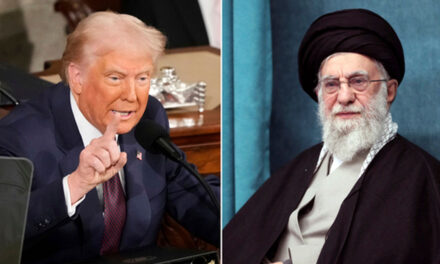
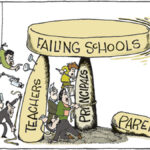

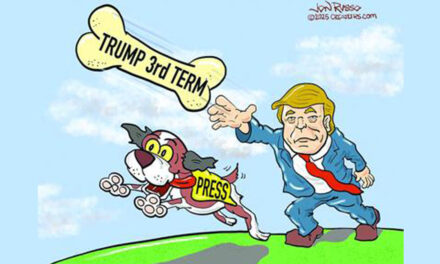


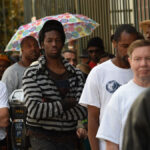
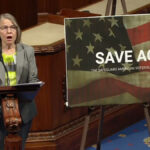
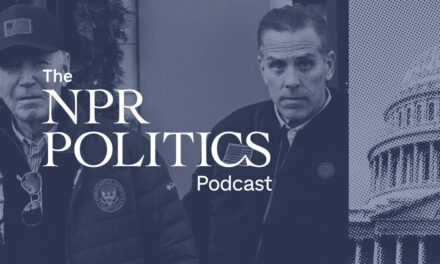



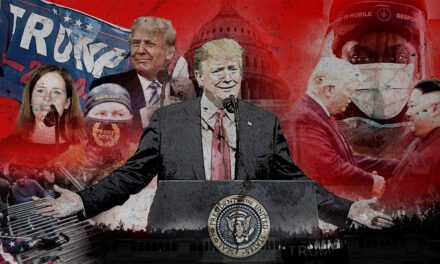


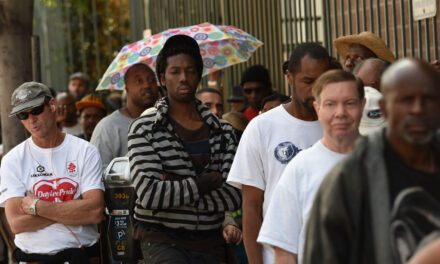





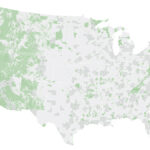

Again, where are the Red areas where stuff like this does not happen, and what programs and policies make it so?